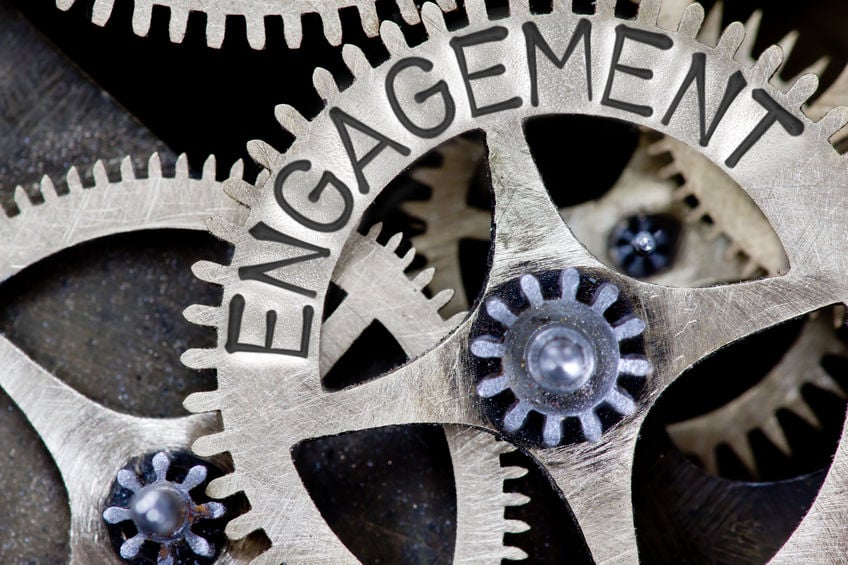6 min read
Multi-Generational Workforce Engagement: A Guide to Inclusive Learning
 Karen Vieth
:
Mar 31, 2025 8:00:00 AM
Karen Vieth
:
Mar 31, 2025 8:00:00 AM

Multi-generational workforce engagement is no longer just a buzzword. In 2025, your organization may have employees from five generations—Traditionalists, Baby Boomers, Generation X, Millennials, and Gen Z—all working together, sharing virtual spaces, and shaping company culture.
When done correctly, inclusive workplace learning taps into their varied strengths and fuels innovation. When overlooked, it can lead to friction, miscommunication, and stalled progress.
In this post, I’ll explore why multi-generational workforce engagement matters, how training for Gen Z, Boomers, and everyone in between can evolve, and the best strategies for workplace engagement. The goal is to ensure that employees across all generations feel heard and motivated. You’ll discover practical tips for adapting training to generational diversity and learn how designing multi-generational L&D programs can unlock everyone’s potential.
Key Takeaways
- Miscommunication Is Often the Root Issue: According to the Inclusion Geeks, many so-called “generational conflicts” stem from differences in work preferences and communication styles. Clarifying expectations and creating open feedback channels can reduce friction and encourage diverse perspectives.
- Tailor Training Formats to Each Generation: Training for Gen Z and Boomers may require multiple modalities—short, tech-driven microlearning for younger employees and more structured, in-person workshops for those who prefer traditional formats.
- Champion Mentoring & Reverse Mentoring: Pair seasoned team members with newcomers to foster two-way knowledge exchange. This approach enhances multi-generational workforce engagement, encourages collaboration, and builds cross-generational respect.
- Leverage Hybrid and Flexible Learning: Inclusive workplace learning calls for combining synchronous (live) and asynchronous (self-directed) methods, allowing every generation to learn in ways that best suit their schedules and preferences.
- Continuously Refine Your Strategy: Designing multi-generational L&D programs is an ongoing process. Regularly assess outcomes, gather feedback from all age groups, and be ready to adapt your approach to maintain relevance and impact.
Why Multi-Generational Workforce Engagement Matters
Today’s diverse workforce is a powerful asset—if you know how to harness it. Each generation brings unique perspectives and communication styles, but those same differences can also create tension if not managed well.
Rachel Murray, in her Inclusion Geeks article, Addressing Conflict at Work with Clarity and Care, shares:
Differences in values, communication styles, and work preferences between generations can lead to misunderstandings and tensions. Example: A Millennial employee prefers instant messaging for quick updates, while a Gen X manager insists on formal emails. The differing preferences lead to frustration and miscommunication about expectations.
Proactive multi-generational workforce engagement helps you avoid:
- Misaligned Training Approaches
A one-size-fits-all approach may alienate employees. Training for Gen Z and Boomers can falter if it only caters to one group’s comfort zone. Younger employees may favor quick, on-demand modules while older colleagues might prefer structured, in-person sessions. - Lost Collaborative Opportunities
When knowledge remains siloed, teams miss out on diverse insights that could drive innovation. - Higher Turnover
Employees who don’t feel understood or valued are more likely to leave for organizations that invest in inclusive workplace learning.
Quick Tip: Start by surveying employees about their learning preferences. Base your multi-generational workforce engagement strategy on real data, not stereotypes.
Meet the Five Generations
To adapt training for generational diversity, start by understanding who your learners are—and what motivates them. Use this overview as a framework to guide inclusive, effective learning experiences across age groups.
Keep in mind that generational boundaries may vary slightly depending on the source, but the following breakdown reflects commonly accepted ranges.
1. Traditionalists (Born Before 1946)
- Who They Are: Grew up during the Great Depression and WWII; therefore, loyalty, respect for authority, and stability are core values.
- How They Engage: They like clear, step-by-step directions and may be cautious about untested tools and new technology. However, they bring a wealth of experience to share.
- Training Tips:
- Provide thorough reasons for new processes or tech.
- Offer mentoring roles where they can pass on their knowledge.
- Use small-group or in-person discussions to tap into their expertise.
2. Baby Boomers (1946–1964)
- Who They Are: Career-focused, achievement-driven, and comfortable with structured learning.
- How They Engage: They value face-to-face interaction and recognition for accomplishments.
- Training Tips:
- Include formal recognition or awards.
- Organize group discussions for brainstorming.
- Provide space for them to share insights with junior team members.
3. Generation X (1965–1978)
- Who They Are: Grew up during economic and social transitions; independence and work-life balance are key.
- How They Engage: They dislike micromanagement and prefer practical, self-directed learning.
- Training Tips:
- Offer digital modules for flexible learning.
- Clearly outline training objectives right from the start.
- Provide both solo learning and the occasional group session.
4. Generation Y (Millennials) (1979–1995)
- Who They Are: Internet-era natives who value purposeful work, collaboration, and quick feedback.
- How They Engage: They’re all about interactive, tech-powered learning (online polls, chat forums) but will tune out if the content feels irrelevant.
- Training Tips:
- Use real-world scenarios and gamification.
- Embed social features like collaborative projects and chat groups.
- Show them how new skills directly feed into career advancement.
5. Generation Z (Born After 1995)
- Who They Are: True digital natives, often independent and ready to experiment.
- How They Engage: They gravitate toward quick, tech-savvy training (videos, podcasts) and want prompt, thorough feedback.
- Training Tips:
- Microlearning works well—keep it short and sweet.
- Balance group activities with individual challenges.
- Consider mobile-friendly tools so they can learn anytime, anywhere.
Adapting Training for Generational Diversity
While we often reference generational groups to frame workplace trends, it’s critical to recognize that people are individuals first. Preferences vary widely within generations—not just between them. The most effective L&D strategy doesn’t guess what people want based on age—it asks, listens, and adapts. Adapting training for generational diversity ensures you meet each generation’s preferences. For example, consider including:
Personalized Learning Paths
- Microlearning Modules: Ideal for Gen Z’s on-the-go and fast-paced learning style.
- In-Person Workshops: Baby Boomers and Traditionalists often appreciate deeper, face-to-face discussions.
Blended Tech Approaches
- Interactive Tools: Live polls, Q&A, and gamification keep tech-savvy learners (Millennials, Gen Z) engaged.
- Guided Tutorials: Provide step-by-step guides for anyone less familiar with emerging technologies.
Flexible Schedules
- Hybrid Sessions: Offer both digital and live options so employees can choose what works best for them.
- On-Demand Recordings: Allow people to review material when and how they prefer.
Some learners—regardless of generation—prefer quick, tech-driven experiences, while others may find structure and group discussion more helpful. The key is offering options and letting the learners guide the approach. These groupings can offer context—but they should never dictate design. Always validate assumptions with actual learner feedback. A SHRM study found that 72% of employees want training that aligns with their current career stage, underscoring how inclusive workplace learning can significantly boost engagement and retention.
Strategies for Workplace Engagement Across Generations
Simply providing training content isn’t enough; people need to feel supported and recognized. Here are strategies for workplace engagement that strengthen multi-generational workforce engagement:
- Mentoring & Reverse Mentoring
- Pair seasoned employees (Boomers, Gen X) with newer hires (Millennials, Gen Z) so knowledge flows both ways.
- This approach narrows skill gaps and fosters mutual respect.
- Team-Based Challenges
- Design competitions or hackathons that require a range of perspectives.
- Highlight successful teams publicly, reinforcing unity and collaboration.
- Continuous Feedback Loops
- Use pulse surveys or quick check-ins to see how well training resonates with each generation.
- Take action on feedback to demonstrate you value everyone’s input.
- Transparent Goals and Outcomes
- Be clear about the reasons behind each learning initiative—especially when designing multi-generational L&D programs.
- Employees are more motivated when they understand the end goal.
Bridging Generational Gaps in Training
As noted earlier, many “generational conflicts” often stem from differing communication habits, not generational divides. Bridging generational gaps in training means harmonizing how each group exchanges and receives information. To help bridge these gaps:
Encourage Open Dialogues
- Organize roundtable discussions where employees share their preferred communication and feedback styles.
- Leaders who practice empathy and active listening set the tone for multi-generational workforce engagement.
Peer-to-Peer Knowledge Sharing
- Maintain a centralized hub of how-to guides or mini-tutorials, contributed by employees across age groups.
- This promotes inclusive workplace learning and reduces stigma around asking “basic” questions.
Celebrate Collective Wins
- Publicly acknowledge accomplishments across generations, whether it’s a Traditionalist trying new software or a GenZ leading a successful pilot project.
- Recognizing diverse successes fosters respect and ongoing collaboration.
Designing Multi-Generational L&D Programs That Last
Designing multi-generational L&D programs is an ongoing process that involves continuous adaptation—training for generational diversity, acting on real feedback, and staying open to change. By investing in multi-generational workforce engagement and inclusive workplace learning, you build a stronger, more resilient organization.
By bridging generational gaps in training and implementing inclusive learning solutions, you’ll not only boost engagement but also unlock the collective intelligence of your workforce. Each generation has a voice worth hearing—and when all those voices come together, your organization benefits from a richer exchange of ideas, improved collaboration, and innovative problem-solving. Embracing this diversity empowers your workforce to thrive, driving both individual growth and organizational success.
InSync Training: Your Partner in Virtual Learning Mastery
InSync Training empowers L&D professionals with innovative approaches to captivate modern learners. Our Virtual Learning Masterclass Series is designed by InSync Academy experts to transform your training delivery, helping you create engaging, impactful experiences in today’s dynamic virtual and hybrid environments. Whether you’re refreshing existing skills or embracing entirely new modalities, our masterclasses equip you to revolutionize how you teach, train, and inspire.
Ready to Elevate Your Virtual Training Approach?
Harness the power of cutting-edge strategies and interactive facilitation techniques to drive learner engagement and success in your organization.
👉 Explore the Virtual Learning Masterclass Series
Looking for a tailored solution? Let’s collaborate to develop a custom program that meets your unique organizational needs.

How Technology Bridges Generational Gaps in Workplace Training

A Two-Pronged Approach to Building Learner Engagement
How do we engage the modern learner? This loaded question generates answers ranging from design, delivery, implementation, learning environment...

